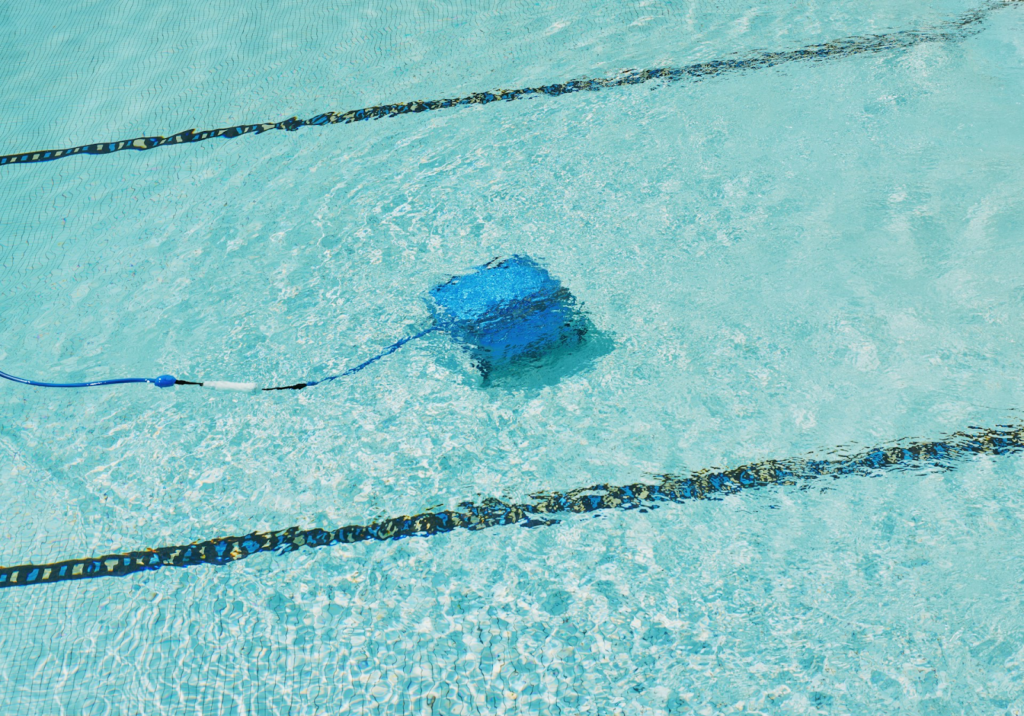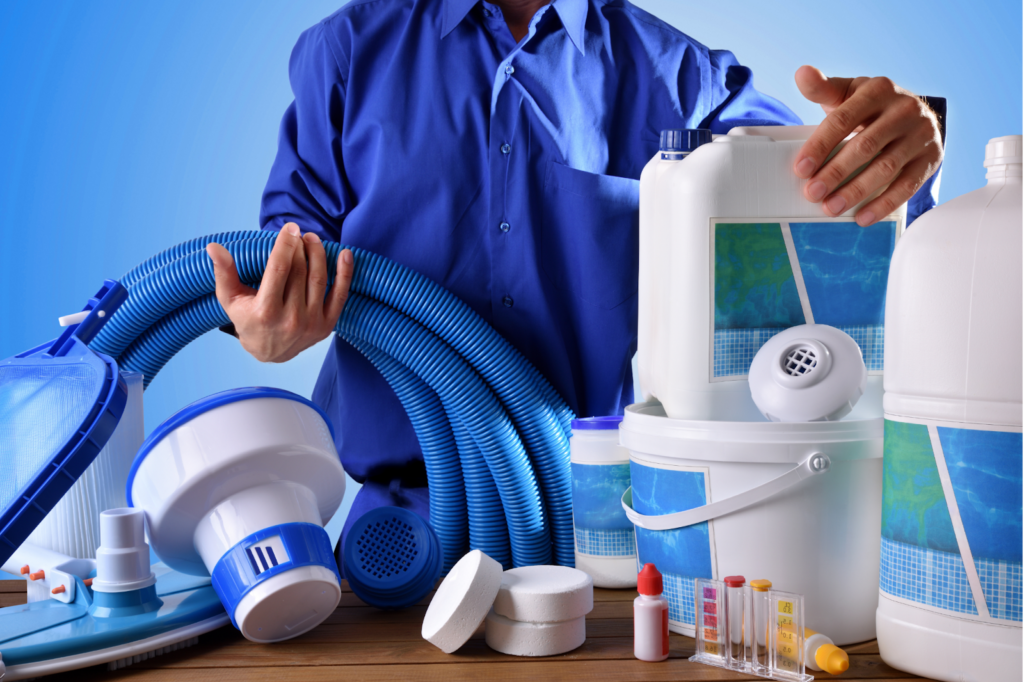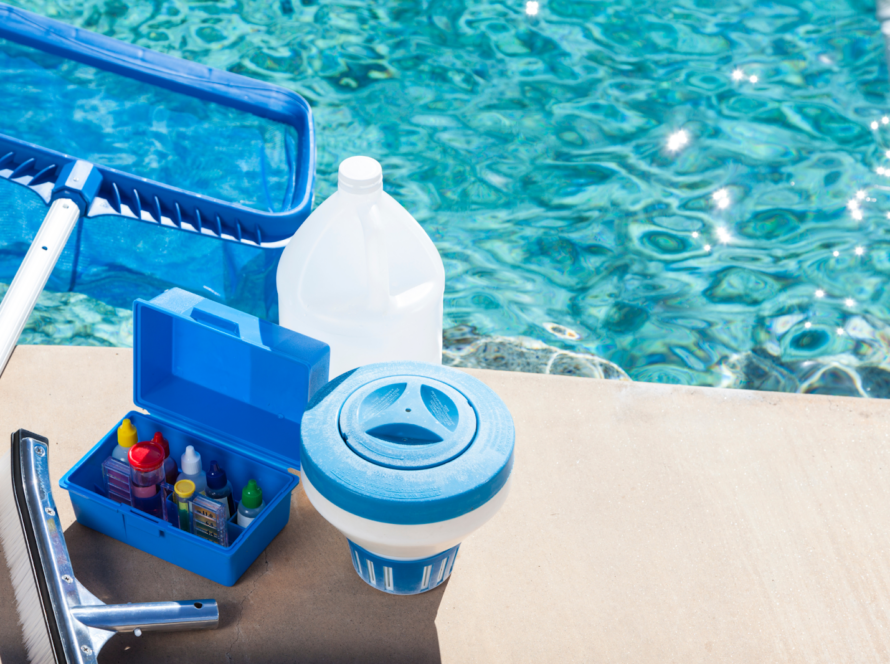Owning a pool brings countless hours of enjoyment and relaxation, but it also comes with responsibilities that can feel overwhelming for new pool owners. Many beginners find themselves confused by chemical balancing, cleaning routines, and equipment maintenance. Without proper care, your backyard oasis can quickly transform into a murky, algae-filled headache. The good news? Pool maintenance doesn’t have to be complicated or time-consuming when you know the essentials. At 9 Eighteen Pool Repair, we’ve helped countless first-time pool owners master the basics of pool care. This guide will walk you through eight critical maintenance tips that will keep your pool sparkling clean, safe, and ready for enjoyment throughout the swimming season. From understanding water chemistry to recognizing when it’s time to call the professionals, these fundamentals will set you up for pool ownership success.
Understanding Your Pool’s Basic Components
Before diving into maintenance tasks, familiarize yourself with your pool’s essential components. Every pool system typically includes a pump, filter, skimmer, returns, and drainage systems. The pump circulates water through the filter, removing debris and contaminants before returning clean water to the pool.
Different pools use various filtration systems – sand filters, cartridge filters, or diatomaceous earth (DE) filters. Each has specific maintenance requirements and cleaning schedules. Your skimmer baskets catch larger debris before it reaches the pump, while returns push filtered water back into the pool.
The drainage system allows you to lower water levels when necessary. Understanding how these components work together helps you troubleshoot problems and communicate effectively with professionals when needed.
If your equipment isn’t functioning properly, efficiency decreases and your pool’s cleanliness suffers. When components like pumps or filters start to falter, reaching out to specialists in pool equipment repair can save you time and prevent more serious issues down the line.
Mastering Water Chemistry Basics
Pool water chemistry intimidates many beginners, but understanding a few key measurements makes it manageable. Balanced water keeps swimmers safe and protects your pool equipment from damage.
The three primary measurements to monitor are:
- pH level (ideal range: 7.2-7.8)
- Chlorine level (ideal range: 1-3 ppm)
- Total alkalinity (ideal range: 80-120 ppm)
Test your water at least weekly using test strips or a liquid test kit. Consistency is key – regular testing helps you catch imbalances before they become problems. After heavy rain, intense heat, or when your pool sees heavy use, test more frequently.
High pH levels can cause scaling and reduce chlorine effectiveness, while low pH can corrode equipment and irritate skin and eyes. Chlorine sanitizes your water, eliminating harmful bacteria. Without proper chlorine levels, algae and bacteria multiply rapidly.
Alkalinity acts as a buffer for pH, preventing rapid fluctuations. Many beginners make the mistake of overcompensating when adjusting chemicals. Always add chemicals gradually, wait 6-12 hours, then retest before making additional adjustments.
Creating an Effective Cleaning Schedule

Consistency is the secret to simple pool maintenance. Establish a regular cleaning routine to prevent problems before they start. Daily, weekly, monthly, and seasonal tasks form the backbone of effective pool care.
Daily maintenance takes just minutes but pays significant dividends. Skim the surface to remove floating debris, empty skimmer baskets, and check water levels. These quick tasks prevent debris from sinking, decaying, and consuming chlorine.
Weekly tasks include vacuuming the pool floor, brushing walls and tiles, and testing water chemistry. Brushing prevents algae buildup in corners and on surfaces where circulation might be poor. Even with automatic cleaners, some manual brushing remains necessary.
Monthly maintenance should include more thorough filter cleaning, checking for equipment leaks, and inspecting for wear and tear on components. Depending on usage and environment, your filter may need cleaning more frequently.
Seasonal maintenance varies by climate. In warmer regions like Texas, pools might require year-round attention, while colder areas need specific opening and closing procedures. At 9 Eighteen Pool Repair, we help pool owners develop customized maintenance schedules based on their specific pool type, usage patterns, and local climate conditions.
Mastering Proper Filtration and Circulation
Your pool’s filtration system is its lifeline, removing contaminants and distributing chemicals evenly throughout the water. Many beginners underestimate the importance of proper circulation and filtration time.
As a general rule, your pool water should complete one full cycle through the filtration system at least once daily. This typically means running your pump 8-12 hours daily, depending on pool size, filter efficiency, and usage. During peak summer months or periods of heavy use, increase filtration time.
Position return jets to create a circular flow, preventing dead zones where contaminants can settle. Check for proper water movement by observing the surface – you should see gentle movement across the entire pool.
Clean your filter regularly according to manufacturer recommendations. A clogged filter strains your pump, reduces efficiency, and compromises water quality. Different filter types have specific cleaning procedures:
- Sand filters require backwashing when pressure rises 8-10 PSI above normal
- Cartridge filters need rinsing and soaking in cleaning solution
- DE filters require backwashing and occasional DE powder replenishment
Remember that over-cleaning some filters can reduce efficiency. Follow manufacturer guidelines and consider professional service for annual deep cleaning. The experts at 9 Eighteen Pool Repair can help determine the optimal filtration schedule for your specific pool system.
Conquering Algae Before It Takes Over
Algae – the persistent enemy of pool owners everywhere – can transform clear water into a green nightmare in just 24-48 hours under the right conditions. Prevention is far easier than elimination once algae establishes itself.
Recognize early warning signs: water that appears slightly cloudy or dull, slippery surfaces, or water that rapidly loses its chlorine. These indicators suggest algae may be beginning to bloom. Immediate action can prevent a full-scale outbreak.
Maintain proper chemical balance, especially adequate sanitizer levels. Chlorine levels below 1 ppm create ideal conditions for algae growth. Shock your pool regularly during high-use periods or after heavy rain to eliminate contaminants that feed algae.
Brush walls, steps, and corners weekly, paying special attention to shaded areas where algae often begins. Proper circulation eliminates dead zones where algae thrives.
If you do experience an algae outbreak, act quickly with these steps:
- Test and balance pH (aim for 7.2-7.4)
- Brush the entire pool thoroughly
- Shock the pool with 2-3 times the normal amount
- Run the pump continuously for 24-48 hours
- Continue brushing daily until algae is gone
- Vacuum waste once algae turns from green to gray/white
For stubborn cases, algaecide can help, but it’s not a substitute for proper chlorine levels and mechanical removal through brushing and vacuuming. If you’re struggling with persistent algae problems, consulting with pool maintenance professionals from our blog resources can provide tailored solutions for your specific situation.
Essential Equipment Maintenance
Your pool’s equipment works hard to keep your water clean and safe. Properly maintained equipment lasts longer and performs better, saving you money and frustration over time.
The pump, as your pool’s heart, requires regular attention. Listen for unusual noises that might indicate bearing wear or impeller problems. Check for leaks around seals and inspect the strainer basket weekly, cleaning as needed. A clogged basket restricts water flow, straining the pump motor.
Clean filters according to their type and manufacturer recommendations. Watch pressure gauges – increased pressure usually indicates it’s time to clean. Annual inspection of O-rings and gaskets helps prevent leaks and air intrusion that reduce efficiency.
Heating systems, whether gas, electric, or solar, need specific maintenance. Gas heaters benefit from annual professional inspection to check gas lines, burners, and heat exchangers. Clean solar panels periodically to remove debris that blocks sunlight. Heat pumps need proper airflow, so keep the area around them clear of plants and debris.
Automatic chlorinators and salt systems require periodic cleaning to remove mineral buildup. Salt cells typically need cleaning every 3-6 months, depending on water hardness. Check manufacturer guidelines for specific instructions.
Inspect all equipment pads for water pooling, which can indicate leaks or drainage issues. Keep equipment areas clean and free of debris, insects, and rodents that can damage wiring and components.
Balancing Seasonal Maintenance Needs
Pool maintenance requirements change with the seasons, even in temperate climates. Adapting your approach throughout the year keeps maintenance manageable and prevents seasonal problems.
Spring Preparation
As temperatures rise, prepare your pool for increased use by:
- Thoroughly cleaning and inspecting all equipment
- Checking and replacing worn gaskets or O-rings
- Deep cleaning filters before heavy use begins
- Testing and balancing water chemistry
- Adding preventative algaecide if needed
Summer Maintenance
During peak swimming season, increase vigilance with:
- More frequent water testing (2-3 times weekly)
- Regular shock treatments, especially after heavy use or storms
- Consistent skimming and vacuuming
- Running pumps longer during extreme heat
- Monitoring water levels as evaporation increases
Fall Transition
As swimming decreases:
- Adjust chemical levels for cooler temperatures
- Clean and store summer accessories
- Reduce pump run times as temperatures drop
- Plan for winterization if applicable to your climate
- Consider a professional end-of-season equipment check
Winter Maintenance
Even in warmer climates where pools remain open year-round:
- Adjust chemical levels for reduced use
- Protect equipment from unexpected freezes
- Continue basic maintenance on a modified schedule
- Use covers during extended periods of non-use
- Monitor water levels during rain seasons
Seasonal transitions represent ideal times for professional maintenance checks. Equipment upgrades or repairs are often best scheduled during off-seasons when demand for service is lower. The experts at 9 Eighteen Pool Repair can help you develop a customized seasonal maintenance plan specific to your pool and local climate conditions.
Knowing When to Call the Professionals

While many pool maintenance tasks are manageable for beginners, recognizing when to seek professional help prevents costly damage and ensures safety. Some situations warrant immediate professional attention:
Electrical issues of any kind require professional service. Never attempt DIY repairs on electrical components like pumps, heaters, or lighting systems. Water and electricity create dangerous conditions that demand proper training and equipment.
Structural concerns, including cracks, settling, or leaks in the pool shell, should be addressed by specialists. Early intervention can prevent minor issues from becoming major renovations.
Major equipment failures, particularly with heaters or complex filtration systems, often require professional diagnosis and repair. The cost of professional service typically outweighs the risk of further damage from inexperienced repairs.
Consider professional service for seasonal openings and closings, especially during your first year of ownership. Professionals can teach you proper techniques while ensuring your pool is correctly prepared for the season.
Regular professional inspections, typically annual or semi-annual, help identify potential issues before they become problems. These check-ups often reveal maintenance needs that might go unnoticed, extending equipment life and preventing unexpected failures.
Frequently Asked Questions
How often should I test my pool water chemistry?
During regular use, test your water at least weekly using reliable test strips or a liquid test kit. During periods of heavy use, extreme weather, or after adding fresh water, increase testing frequency to 2-3 times per week. Focus on pH, chlorine, and alkalinity as your primary measurements. Quarterly testing of additional parameters like calcium hardness and cyanuric acid provides a more complete picture of your water balance. Consistent testing and minor adjustments prevent the need for major chemical corrections that can be costly and time-consuming.
What’s the difference between shocking my pool and adding regular chlorine?
Regular chlorine maintenance involves adding small amounts of chlorine (typically 1-3 ppm) to maintain sanitizing levels during normal use. Pool shocking involves adding a large dose of chlorine (typically raising levels to 5-10 ppm) to quickly eliminate contaminants, bacteria, and algae. Think of regular chlorination as preventative maintenance, while shocking is more like a reset button. Most pools benefit from regular shocking every 1-2 weeks during swimming season, regardless of regular chlorine levels, to eliminate combined chlorine (chloramines) that cause irritation and odors.
How can I reduce the amount of chemicals I need to use in my pool?
Several strategies can help minimize chemical usage while maintaining water quality. First, maintain proper circulation and filtration – clean water requires fewer chemicals. Use pool covers when the pool isn’t in use to reduce contamination, evaporation, and UV degradation of chlorine. Consider installing a UV or ozone system that reduces chlorine requirements by 50-70%. Regular preventative maintenance reduces the need for corrective chemicals. Finally, maintain proper water balance – when pH, alkalinity, and stabilizer levels are correct, your sanitizer works more efficiently, requiring less product overall.
Why does my pool get cloudy after heavy use or rainstorms?
Cloudiness typically results from one of several factors that often occur during heavy use or weather events. High bather load introduces body oils, sunscreen, and other contaminants that overwhelm your normal chlorine levels. Rainstorms can introduce nitrates, phosphates, and other nutrients that feed algae while diluting existing chemicals. Additionally, pH often rises after rain, reducing chlorine effectiveness. After heavy use or storms, check and adjust your chemistry, clean your filter, and consider a shock treatment to quickly restore clarity. Installing a phosphate remover can also help prevent cloudiness after rain.
How do I know if my pool has a leak versus normal evaporation?
Distinguishing between evaporation and leaks can be challenging, but a simple “bucket test” helps identify true leaks. Fill a bucket with pool water to about 2 inches from the top. Place the bucket on a pool step (so it’s exposed to the same temperature and environmental conditions as your pool). Mark the water level inside the bucket and the pool water level outside the bucket. After 24 hours, compare the levels. If the pool level has dropped significantly more than the bucket level, you likely have a leak. Normal evaporation typically accounts for about ¼ inch per day during warm weather, though this varies by climate and conditions.
Keep Your Pool Running Smoothly with Consistent Care and Expert Support

Mastering pool maintenance doesn’t require professional expertise – just consistency, attention to detail, and knowledge of the basics. By following these eight essential tips, you’ll avoid the most common pitfalls new pool owners face. Remember that regular, small maintenance tasks prevent major problems and expenses down the road. When in doubt, don’t hesitate to consult with professionals who can provide guidance specific to your pool type and local conditions. With proper care, your pool will provide years of enjoyment with minimal frustration. Ready to take your pool maintenance to the next level or need help with a specific challenge? The team at 9 Eighteen Pool Repair is ready to assist with everything from routine maintenance to complex repairs and upgrades.
About Us
At 9 Eighteen Pool Repair, we provide expert pool repair and remodeling services built to restore, upgrade, and protect your investment. From equipment repairs and structural fixes to full-scale remodels and outdoor living upgrades, our team delivers reliable solutions that keep your pool safe, functional, and looking its best.Need help with your pool? Contact us today or call 469-492-9595 to schedule a consultation with one of our experienced technicians. We proudly serve homeowners across DFW with professional service, honest advice, and lasting results.

